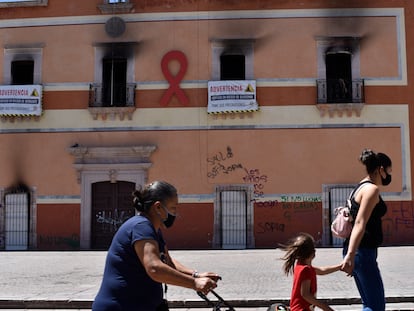Murders, disappearances and drug trafficking: the criminal nightmare of Zacatecas, Mexico
The massacre of six young people reveals how organized crime has imposed its rule over a Mexican state that is plagued by everyday violence and a war between cartels
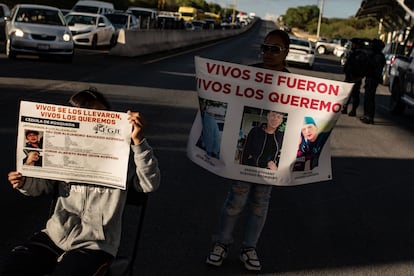
This past Saturday, seven friends and cousins – between the ages of 14 and 18 – spent the night together at a ranch in the community of Malpaso, in the Mexican state of Zacatecas. The following dawn, a group of armed men entered the property, shooting into the air. They took all of the teenagers, who were still barefoot. Then, in an extortion attempt, they sent a video to their families, in which the young people could be seen walking down a hill. The kidnappers threatened the youngsters’ relatives, so that they wouldn’t go to the authorities. But the mothers and fathers of the prisoners blocked roads and raised their voices to demand justice: they wanted to see their children alive again.
The kidnappers eventually killed six of the boys and abandoned the bodies in an area that’s “difficult to access, since there are no roads,” according to a statement by the State Prosecutor’s Office, which was released a couple of days later. Only one boy survived.
The brutality of the crime has shaken the country. It has, once again, emphasized an incontestable reality: organized crime does as it pleases in many regions of Mexico. Zacatecas is a hot zone —a crossroads for drug-trafficking into the United States and a territory that’s heavily disputed by the cartels. The most recent tragedy is just another link in a long chain of armed confrontations, kidnappings and murders that has spanned almost two decades, despite the authorities’ efforts to contain the spiral of violence unleashed by the war between cartels. Around 6,500 members of the Mexican Army, National Guard and Federal Secretariat of Public Security are currently deployed in the state, according to official figures that were published last month.

This past August, five police officers were kidnapped and later found dead in Villa Hidalgo. That same month, in Cuauhtémoc, a confrontation between cartels forced classes to be suspended; residents were told to shelter in place. In September, four human heads were found abandoned in plastic bags in Guadalupe. In the same community, a 14-year-old boy died when a commando ambushed agents from the State Prosecutor’s Office. The authorities found three murdered people wrapped in blankets in Villanueva, the same municipality where Malpaso is located. A massacre at a court in Guadalupe left six dead. And, in addition to the murders across the state, the number of disappearances are on track to break historical records: there were 720 in the first eight months of 2023, the same amount as in all of 2021.
On Thursday, President Andrés Manuel López Obrador acknowledged the sudden increase in homicides in recent days, due to the violent events in Zacatecas and Nuevo León, where the remains of 12 people were found in less than a week. “It’s regrettable,” the president noted, regarding the discovery of the bodies of six of the seven young people who were kidnapped in Malpaso.
The wave of violence has created a practically impenetrable scenario for academics and journalists, who are staring down a map of violence that constantly shifts and doesn’t allow for clear understanding. A study by the Drug Program at the Center for Economic Research and Teaching (CIDE) showed how, in 2020, at least six cartels had an active presence in the state of Zacatecas: from large organizations – such as the Jalisco New Generation Cartel (CJNG), the Sinaloa Cartel and the Northeast Cartel – to smaller criminal cells. There are, for example, Los Cabrera and Operativa MZ – the armed wings following orders given by Ismael “El Mayo” Zambada, under the umbrella of the Sinaloa Cartel. And then are splinter groups, such as Los Talibanes – former members of Los Zetas, who are now allied with the Northeast Cartel.
“Zacatecas is the place that best reflects how the fragmentation of criminal groups translates into violence,” notes Carlos Pérez Ricart, a researcher at CIDE. The specialist explains that the absence of a single hegemonic group paves the way for territorial disputes and displays of power to intimidate rivals. However, he recognizes that it’s unclear how criminal organizations, their factions, their allies and their rivals interact.

Pérez Ricart lists several observations that have been shared among those who have studied the drug phenomenon in Zacatecas: the state’s condition as a transit territory, the permanent struggle between criminal groups, the cooptation of state and local authorities, as well as the presence of other illegal markets unrelated to drug trafficking, such as land-trafficking and informal mining. And then, there’s the level of perceived violence: nine out of 10 residents of Zacatecas feel unsafe in the main cities, according to the National Institute of Statistics and Geography (INEGI). In cities such as Fresnillo —one of the main hot spots of violence— there isn’t an excessive incidence of robberies, but there’s a perception of constant vulnerability, due to the crudeness of the crimes that are committed. “Not because they rob you, but because they kill you,” Pérez Ricart says.
For Miguel Moctezuma —who hails from Zacatecas and is a member of the Global Security Programme at the University of Oxford— the recent kidnappings and murders are very complex. It’s difficult to establish a diagnosis. However, the academic —an expert in the dynamics of violence in his homeland— feels that the most likely scenario is that the seven teenagers were collateral damage in a battle between mafias that sought to “stir up some chaos.”
The case of Malpaso —in the municipality of Villanueva— is eerily similar to the recent disappearance of five young people in Lagos de Moreno, in the neighboring state of Jalisco. It has also put the spotlight on the ravages of violence in the state, which specifically involve young men. In 2022, there were 1,432 homicides in Zacatecas: 1,261 of the victims were men and 621 were men under the age of 30, according to the INEGI. The figures have given rise to several hypotheses about the role that cartel recruitment plays in the phenomenon of violence in Mexico and its impact on this population group.
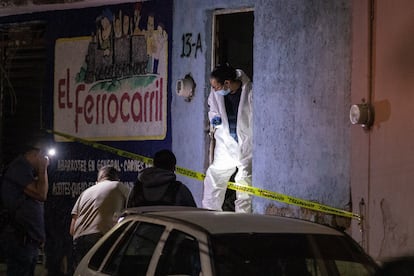
Pérez Ricart speaks of a prototypical demographic profile of cartel recruits that’s common throughout Latin America: overwhelmingly male, between the ages of 17 and 24, living in poor urban areas, lacking opportunities… and who, in many cases, have survived shootings.
At the same time, this profile also acts as a portrait of those who are most vulnerable to armed violence. The specialist emphasizes that this segment of the population is 70 times more likely to die than the rest of the inhabitants of Mexico.
“There are cases in Zacatecas of forced recruitment… but that [possibility doesn’t make sense in this recent case] because one of the parents reported that [the kidnappers] asked for a ransom, so everything indicates that this was a kidnapping,” Moctezuma clarifies. The researcher’s thesis is that a “planned execution” is also highly-unlikely, because, in those cases, “the groups tend to look for places that have high-accessibility and low visibility: they want to get away from the place of kidnapping as quickly as possible and not be seen.” This is the opposite of what occurred in the case of the boys who were abducted from Malpaso.
The murders have also put the role of the state under scrutiny. In municipalities such as Villanueva —where the crimes took place— Moctezuma says that the abandonment of the state is notable. “These are spaces of emptiness, there’s a lack of the rule of law, a lack of services... in these spaces, the [criminal] groups usually come to hide. And they don’t just live there: they place themselves in these populations as providers, administrators of justice. They sponsor things…” In short, criminal elements become a de-facto government.
On the other hand, according to the INEGI, around half of the residents of Zacatecas don’t trust the state or municipal police. “When the authorities arrive, there’s no incentive for the population [to support the government], because the government was never there in the first place… and, of course, there’s the fear factor,” Moctezuma adds. Problems occur when a rival cartel arrives in the area and tries to establish its authority. “In some cases, opposing groups arrive and [sow discord]: they kidnap people and say that they’re doing it in the name of the cartel that was there previously. They quickly break the legitimacy that the previous group had been building.” While the researcher sees this hypothesis as the most likely one behind the recent events, he cautions that “it’s very difficult to be sure.”
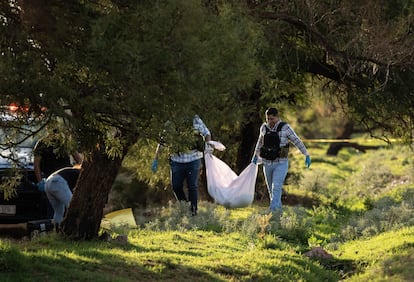
Pérez Ricart disagrees with the idea of the absence of the state. He thinks that the drug traffickers rely on state institutions and their ability to co-opt them to survive. “Organized crime cannot be understood without the state,” he assures EL PAÍS. The corrosion of local institutions causes the National Guard to function in practice as a “substitute for the municipal police.”
Although federal authorities have launched a strategy to stop the advance of criminal groups and create security perimeters in the most violent areas of Zacatecas, Pérez Ricart points out that there has been a lack of further investigation to better understand how violence is generated. This prevents more precise action, beyond containment measures.
The state of Zacatecas continues to seek answers to a deep and prolonged crisis. In the last five years, there have been 4,548 victims of homicide and feminicide, along with 2,371 people who have suffered kidnappings, illegal detentions and other crimes against humanity, according to official data gathered by Mexico United Against Crime, a civil association. In a state with more than 3,600 missing people, a new crime has, once again, shocked a country that thought it had seen it all.
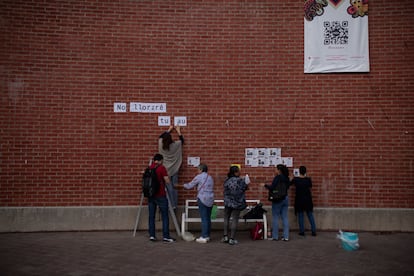
Sign up for our weekly newsletter to get more English-language news coverage from EL PAÍS USA Edition
Tu suscripción se está usando en otro dispositivo
¿Quieres añadir otro usuario a tu suscripción?
Si continúas leyendo en este dispositivo, no se podrá leer en el otro.
FlechaTu suscripción se está usando en otro dispositivo y solo puedes acceder a EL PAÍS desde un dispositivo a la vez.
Si quieres compartir tu cuenta, cambia tu suscripción a la modalidad Premium, así podrás añadir otro usuario. Cada uno accederá con su propia cuenta de email, lo que os permitirá personalizar vuestra experiencia en EL PAÍS.
¿Tienes una suscripción de empresa? Accede aquí para contratar más cuentas.
En el caso de no saber quién está usando tu cuenta, te recomendamos cambiar tu contraseña aquí.
Si decides continuar compartiendo tu cuenta, este mensaje se mostrará en tu dispositivo y en el de la otra persona que está usando tu cuenta de forma indefinida, afectando a tu experiencia de lectura. Puedes consultar aquí los términos y condiciones de la suscripción digital.
More information
Archived In
Últimas noticias
Maduro pleads not guilty before the federal court in New York: ‘I am still the president of Venezuela’
A new test can detect Alzheimer’s from a finger prick
UN team enters Sudanese city of El Fasher after paramilitary massacre: ‘It’s like a ghost town’
A recipe for resistance: Indigenous peoples politicize their struggles from the kitchen
Most viewed
- Gilles Lipovetsky: ‘If you want to live better and fall in love, take Prozac, don’t look to philosophy’
- Alain Aspect, Nobel laureate in physics: ‘Einstein was so smart that he would have had to recognize quantum entanglement’
- Alvin Hellerstein, a 92-year-old judge appointed by Bill Clinton, to preside over Maduro’s trial in New York
- Why oil has been at the center of Venezuela-US conflicts for decades
- Maduro’s downfall puts China’s relationship with Venezuela to the test
